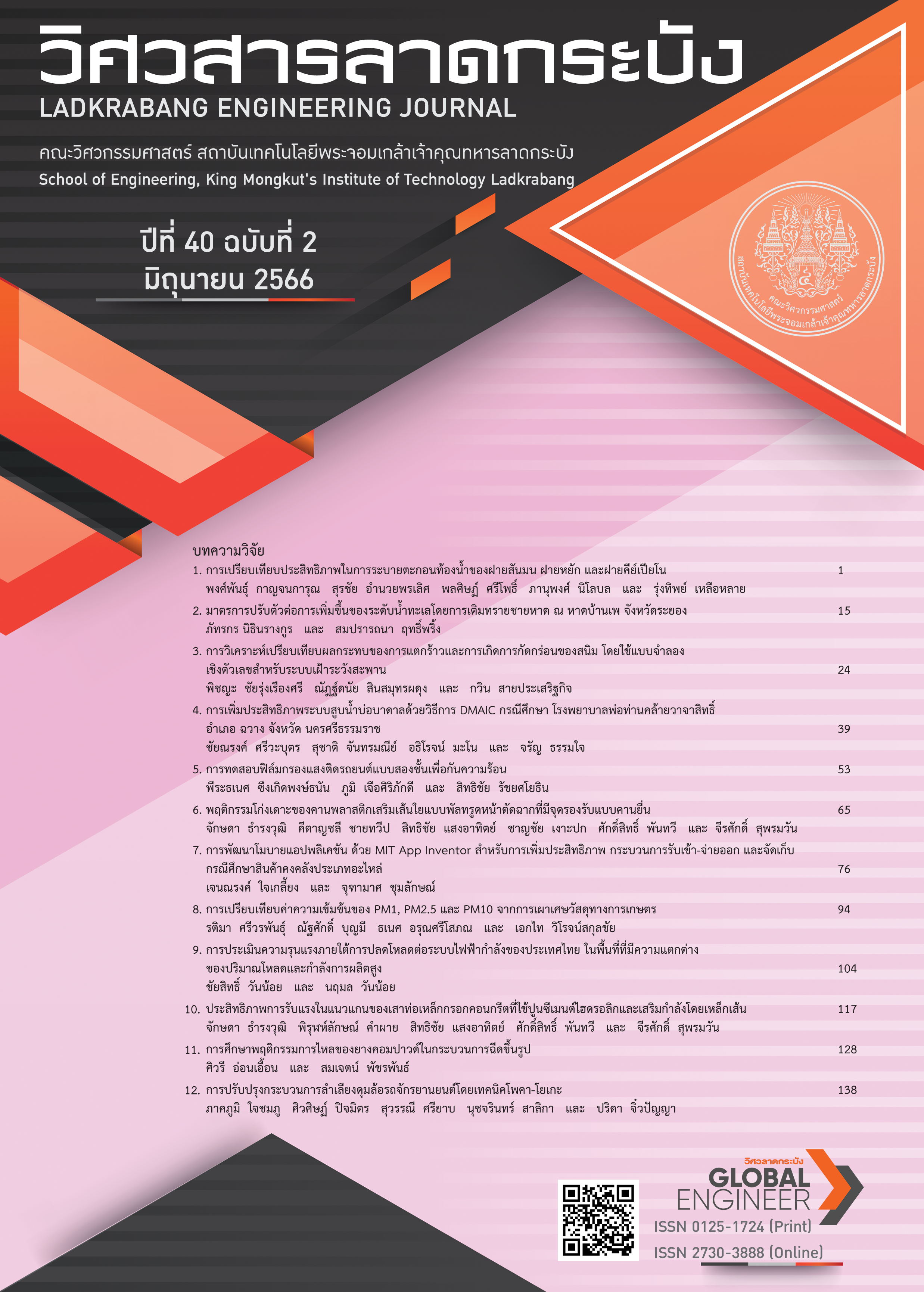Evaluating Double Layer Car Window Films for Heat Protection
Keywords:
Window film, Heat protection film, Automotive window film, Thermal resistance, Thermal conductivityAbstract
This research has studied the thermal resistance of automotive film using double-layer patterns to evaluate the thermal performance of three different types of film materials including ceramic, carbon, and dyed. Although the single-layer ceramic film filter has a good thermal conductivity resistance, but the price is high. Therefore, the lower grade and price of automotive films such as carbon and dyed films were used by overlaying them into a double layer. In this research, the films were overlapped between each other to obtain the luminous intensity of 38 Lux and 114 Lux with a light transmittance of 5% and 20%. The top layer, light transmittance of 35%, overlaid with a light transmittance film of 20%, can increase thermal resistance better than the top layer of transmittance of 20%, overlaid with a light transmittance film of 35% by 4.24%. Considering the relative cost against thermal conductivity resistance rate, the double layer of dyed films which has the thermal resistance of 9.4°C/W have the least thermal conductivity resistance per unit cost of 533 bath per unit area. The overlaying order of the films also affects the thermal conductivity resistance. When the top layer is dyed film, it can prevent heat better than carbon film as a top layer. Moreover, the double-layer film patterns mentioned above have a better thermal conductivity resistance than ceramic film with a light transmittance of 5% and 20%.
References
International Window Film Association (IWFA). “About Window Film.” IWFA.com. https://www.iwfa.com/about-window-film (accessed: Sep. 26, 2022).
Thai Window Film. “Knowledge of optical film.” thaiwindowfilm.com. https://www.thaiwindowfilm.com (accessed: Sep. 26, 2022).
K. Wiriyaprasat, “Car Heat Reduction FilmTest.” chaladsue.com. https://chaladsue.com/article/2606 (accessed Sep. 26, 2022).
T. Bunnag, R. Suwanmani and R. Sananaa, “Heat transfer and light transmission through polycarbonate corrucated and double layer reflective aluminium,” Suthiparithat Journal, vol. 19 no. 57, pp. 94–108, 2005.
C. -Y. Tseng, Y. -A. Yan and J. C. Leong, “Thermal Accumulation in a General Car Cabin Model,” Journal of Fluid Flow, Heat and Mass Transfer, vol. 1, pp. 48–56, 2014, doi: 10.11159/jffhmt.2014.008.
T. Kiawpan, “Study of Thermal Performance of Various Heat Protection Films for Vehicles,” M.E thesis, Dept. Energy Management Technology, King Mongkut’s University of Technology Thonburi, Bangkok, Thailand, 2014.
T. Bunnag, “A Study of Heat and Light transmission through Windows of Building,” Faculty of Engineering, Dhurakijpundit University, Bangkok, Thailand, Final Rep., 2004.
EDL Co., Ltd. “Basic film parameters/properties you should know.” kontrast.in.th. https://kontrast.in.th/technology/parameter (accessed Sep. 26, 2022)
T. Srisilpsophon, “Influence of Solar Filter Film on Mean Radiant Temperature and Heat Transfer Phenomenon in Vehicle Cabin,” Ph.D. Thesis, Dept. Thermal Tech., King Mongkut’s Univ. of Tech. Thonburi, Bangkok, Thailand, 2006.
Downloads
Published
How to Cite
Issue
Section
License
Copyright (c) 2023 Faculty of Engineering, King Mongkut’s Institute of Technology Ladkrabang

This work is licensed under a Creative Commons Attribution-NonCommercial-NoDerivatives 4.0 International License.
The published articles are copyrighted by the School of Engineering, King Mongkut's Institute of Technology Ladkrabang.
The statements contained in each article in this academic journal are the personal opinions of each author and are not related to King Mongkut's Institute of Technology Ladkrabang and other faculty members in the institute.
Responsibility for all elements of each article belongs to each author; If there are any mistakes, each author is solely responsible for his own articles.






